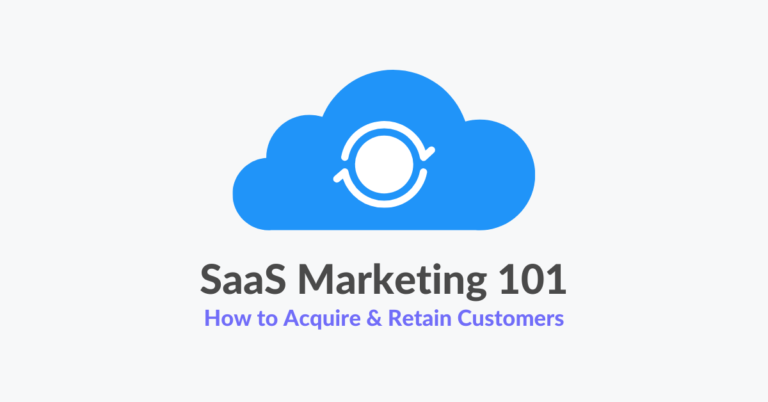SaaS marketing is a complicated topic, but it doesn’t have to be.
If you want to grow your SaaS company, then you need to get more customers. But what about retaining those customers? You might think that retention isn’t important because they’re already signed up for your product or service, but in reality, it’s just as important!
Retaining clients means less churn and more revenue for your company.
In this article, we will explore the basics of SaaS marketing and how you can grow your business and retain clients.
Here’s what you’ll learn reading this article:
- What is SaaS marketing
- 6 ways to drive traffic for SaaS websites
- How to generate sign-ups for SaaS products
- 3 trial registration conversion optimization tips
- 3 techniques to retain customers
Let’s get ‘saasy’!
What is SaaS Marketing?
SaaS Marketing, also known as Software-as-a-Service (SaaS) marketing is the process of promoting and selling a service or product that delivers software over the internet.
SaaS businesses offer software you can use in a web browser instead of the old way of downloading, installing and running applications on computers and data centers.
This eliminates the expense of hardware acquisition, provisioning, and maintenance, as well as software licensing and installation.
A typical example is Salesforce (founded in 1999), which launched the first and only SaaS company back in 2004.
They offer cloud computing for sales departments to automate workflows such as reporting metrics on prospective clients.
As a new solution in the market, Salesforce had to educate users and transform the traditional methods and concepts to the new SaaS era.

And also because SaaS companies provide recurring payment plans, SaaS marketing doesn’t end when a lead becomes a customer. It continues to retain customers as I will elaborate on this later in the article.
Sales-led Vs. Product-led go-to-market strategies
In the sales-led method, your company relies on its marketing and sales team to sell their product. Which means that leads learn about the product from marketing content and sales reps.
On the contrary, in a product-led go-to-market strategy, you focus on opening the door to your SaaS product. This way, leads can self-educate and experience the value your product provides first hand.
Product led-growth is the new way for SaaS companies as it helps the company reach out to more prospective clients and at the same time, it also reduces marketing expenses.
Today, users want to self-educate and test the software to find the one that best suits their needs.
Instead of downloading PDFs, getting in touch with sales reps, users can find the value of your software in a matter of minutes.
Which strategy works for you? Think about your target market, their preferences, your product and channels to figure out which is the right go-to-market strategy for you.
Flywheel or Funnel
There’s another way to think about sales-led and product-led strategies. Modern SaaS companies operate according to the Flywheel model instead of traditional marketing and sales funnels. Flywheel fits the product-led approach, while funnels fit sales-led strategies. But, what do they mean exactly?
The flywheel is really similar to the funnel model: feed your top of the funnel with website visitors and qualified leads, move them through the funnel to become customers.
This is where the traditional funnel would end, but Flywheel takes it further. A flywheel is designed to make promoters out of your users and customers, so they will continue to refer your product to other prospects.
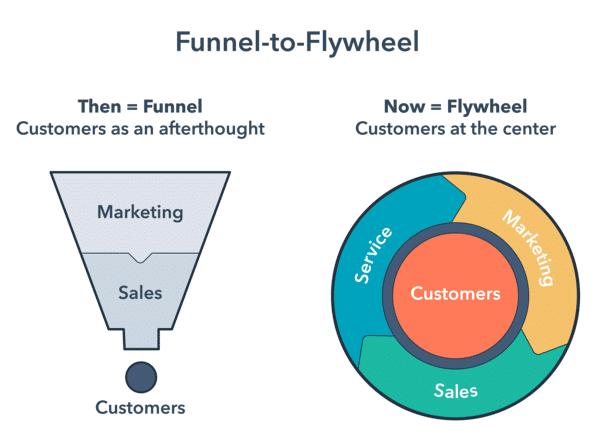
At certain stages of your sales funnel, you’d experience bottlenecks that require you to optimize.
For example, after increasing your registrations, you’d want to optimize your software stickiness to keep users coming back.
And this process continues all year long as it’s vital SaaS companies don’t neglect any stage of their marketing funnel if they want sustainable growth.
Let’s go through the SaaS marketing funnel starting with driving qualified traffic to your website.
6 Ways to Drive Traffic for SaaS websites
You don’t just want any kind of traffic coming to your website. SaaS marketing traffic should consist of people interested in signing up for and eventually buying your product.
The key is to know your ideal customer profile and what they are looking for on the web.
This way you can create content to drive targeted traffic that’s more likely to convert to customers.
1. Guest blogging
Guest blogging is SaaS marketers’ good pal.
It gets your content in front of potential customers without hard work.
You can write guest blogs and find opportunities to submit your posts on other company’s websites.
This way you’ll have a piece of content that is usually long-form and optimized for SEO purposes as it targets certain keywords related to what your business provides.
A good tactic is finding influencers relevant to your solution such as bloggers writing about topics your ideal customers are interested in.
This way, you can reach their audience while building trust with them at the same time — which makes negotiating joint ventures easier down the road too.
Another great place to publish your guest articles is other SaaS websites. Not competitors of course, but other SaaS tools with which you share a similar target audience.
For example, Elementor is a complementary product to Automizy, so we’d publish a guest article on their blog so their audience learns how to use Elementor with Automizy to follow up form submissions.
In your guest article, you can include a short description of your product with a link and invite readers to sign up which drives qualified traffic to your website. But as always, provide value before you start selling.
Guest blogging is a strategic way to open up to new audiences that could be interested in your software.
2. SEO
When developing your SaaS marketing strategy, SEO is a channel you can’t neglect.
Optimizing your website for search engines will help you reach more prospects and drive traffic to your site.
You can optimize the content of your pages, adding valuable keywords in order to rank high on Google searches.
This is a tactic that has proven successful with our website at Automizy. We’ve seen a significant increase when we started focusing on SEO back in September 2018.
In November 2018, our monthly organic traffic was 2100, and today we hit approximately 90K organic visitors monthly.

3. Social bookmarking sites
Social bookmarking sites are a great way to promote your content and they can also drive a lot of traffic to your site.
Social bookmarking sites have their own active communities that can be used for content curation as well as promotion.
You should also register with other smaller or niche-specific social bookmarking sites relevant to your industry in order to reach your target audience.
Submitting your product pages or blog content to social bookmarking sites helps you grow your site’s reach.
Here is a list of social bookmarking sites where you can submit your content:
4. PR
PR coverage is important for every business – therefore it is a must-have in the SaaS marketing stack.
If your brand is known and your product is reliable, sales will be much easier.
With higher brand awareness, prospects will trust your product more than other less popular competitors.
A great example of using PR to increase brand awareness, DuckDuckGo , a search engine that does not track its users, got coverage from The New York Times.
The article was about the importance of privacy on the internet and how DuckDuckGo is helping to protect it through their service.
It resulted in increased traffic for them because people were interested in learning more about what they do.
As a bold PR move, DuckDuckGo placed this billboard on the road Google employees take to get to work.
This billboard created controversy and resulted in high PR coverage.
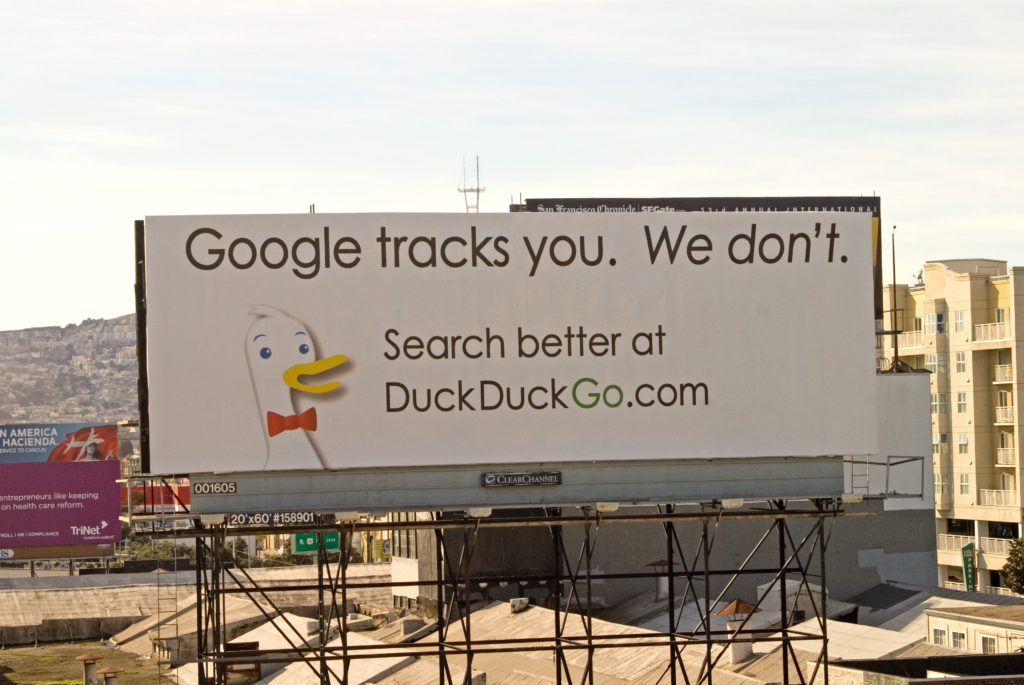
In addition, getting backlinks from big online news portals will help improve your search rankings.
Here is a list of news websites where you can feature your content:
- The Verge
- The Next Web
- Slash Gear
- Wired
- HuffPost
- Mashable
- Venture Beat
- Business Insider
- Engadget
- Entrepreneur
- Business 2 Community
- Gizmodo
- Technology Review
- Marketing Tech News
5. Content promotion platforms
You successfully shared your content on your own blog, social media, newsletters, you managed to share your links on different social bookmarking sites and communities and began link building.
The next step is to help this content go viral!
The tools below help you promote your content on social media.
6. Product listings and review sites
And last but not least it is important to give your product visibility.
You can easily do it by sharing your webpage with different specialized communities.
You can get testers, early-adopters for your product, or you can get reviews that are really valuable too!
Software review websites are essential nowadays to build trust and authority of the newly launched SaaS company.
Potential customers can see what others said about your product and learn about others’ experiences.
Also, people trust review websites more than content published by vendors.
- ProductHunt
- Crunchbase
- Capterra
- SaaS Scout
- Betapage
- Startuplift
- Betalist
- Younoodle
- Techpluto
- KillerStartups
- Launch Feed
- Launching Next
- BetaBound
- Angel.co
- StartupStash
- SaaS Invaders
- F6s
- Startup Ranking
- Alternativeto
- GeekWire
How to Generate Sign-Ups for SaaS Products
1. Offer a freemium version
The best way to attract sign-ups for your SaaS product is by keeping the door open for potential users.
Offering a freemium version of your product allows prospects to explore what you have to offer and see the value for themselves.
Freemium and free trial models are the best because they have a lower barrier to entry.
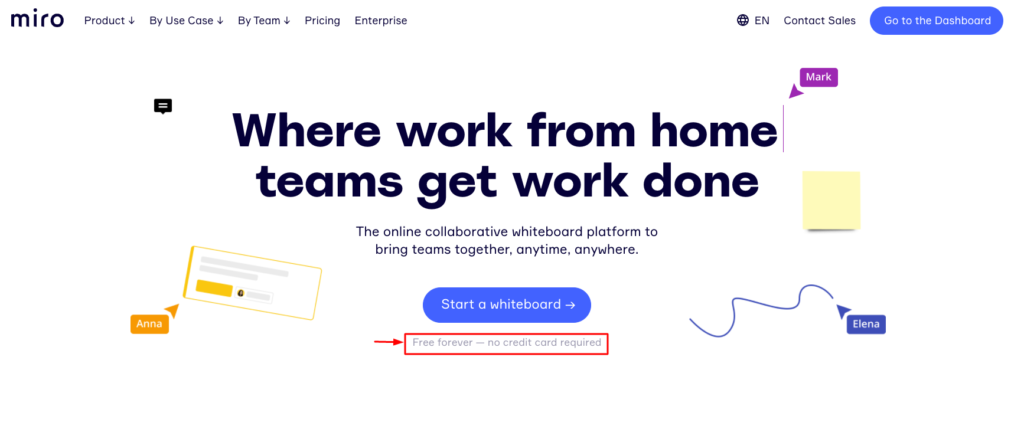
In fact, three out of every four Business to Business (B2B) buyers would rather self-educate than learn about a product from a sales representative, according to Forrester.
2. Offer a free trial
Create a compelling offer for free access or trial use, like 30 days for 100% risk-free, no credit card required.
Besides giving prospects an idea of what your product has to offer in terms of features and value proposition; it also helps them decide if you’re worth spending money on or not and whether it’s really relevant for them.
It allows potential clients who may be on the fence about signing up for your service – due to cost concerns – to explore if there will be any benefit from doing so before investing in something that could potentially disappoint.
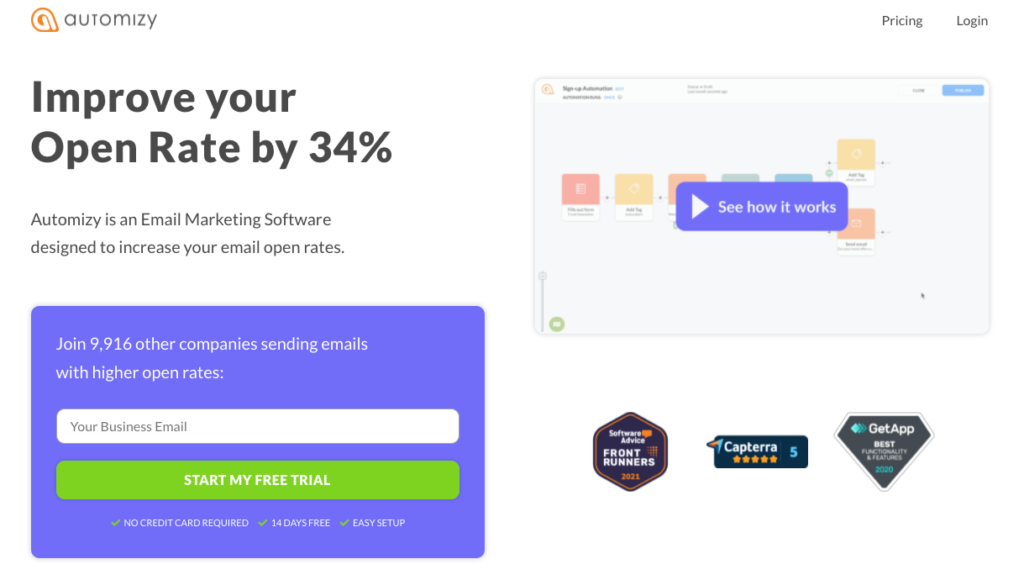
3. Positioning with pricing the right way
Experimenting with your pricing will have an immediate impact on your user acquisition and on your income too.
If you start with a low price, you automatically position your brand for smaller companies or for people with a lower budget. On the other hand, it will be easier for you to acquire users and customers.
But keep in mind that user acquisition is not only defined by the price itself. You can experiment with it: say that you increase your prices after every X amount of new users. Why is it important? Because it is possible that you leave a lot of money on the table.
“…if you start out at say $100 and increase that by 5% each time, after 34 customers you’ll be at $500 (or if you start at $1000, you’ll be at $5000 by your 34th customer). That’s a big increase, but if you’re still not getting 20% pushback, keep raising the price until you do. Or you might run into that pushback at $105.” – says Lincoln Murphy in his article about Pricing Strategy Framework for SaaS Startups.
But always communicate the change of pricing to your existing customers, promise them that you won’t raise their fee. Later on, you can try to make them upgrade by releasing new features to your higher pricing package.
4. Build an email list with pre-launch campaigns
If you want to release a new feature (or a whole new product) it is very important to run pre-launch campaigns. Why?
- You can see how your actual customers and new prospects react to your upcoming product
- You can collect feedback and suggestions even before the official launch
- You will have users from day one
- You can leverage their network for higher reach
- It may bring in new customers
5. Notify influencers that you mentioned them
Influencer marketing is one of your biggest weapons. Write a blog post and mention influencers’ content in it.
But it is not enough: tell them in a tweet and/or in an email that you mentioned them. Don’t ask for sharing, they will if they like your content.
6. Build partnerships on social media
If you see other companies sharing complementary content to your product, you need to check their service. If they aren’t in your exact industry but offer a solution that helps your business, share and retweet their content.
Send them a PM that they can update you if they have a new piece of content on their blog and you will share it with your network.
They will be pleased and probably will do the same for your content.
In addition, it can develop into a long-lasting relationship where you help each other not only with tweets but maybe with affiliate marketing. Win-win situation.
3 Trial Registration Conversion Optimization Tips
1. Create a short sign-up form
The most important element of the sign-up process is the email address. To optimize the registration conversion rate, the email should be a required field.
The starting point for your signup form is to make it short and uncluttered by removing fields that are not needed.
OptiMonk does a good job of keeping sign up forms short.
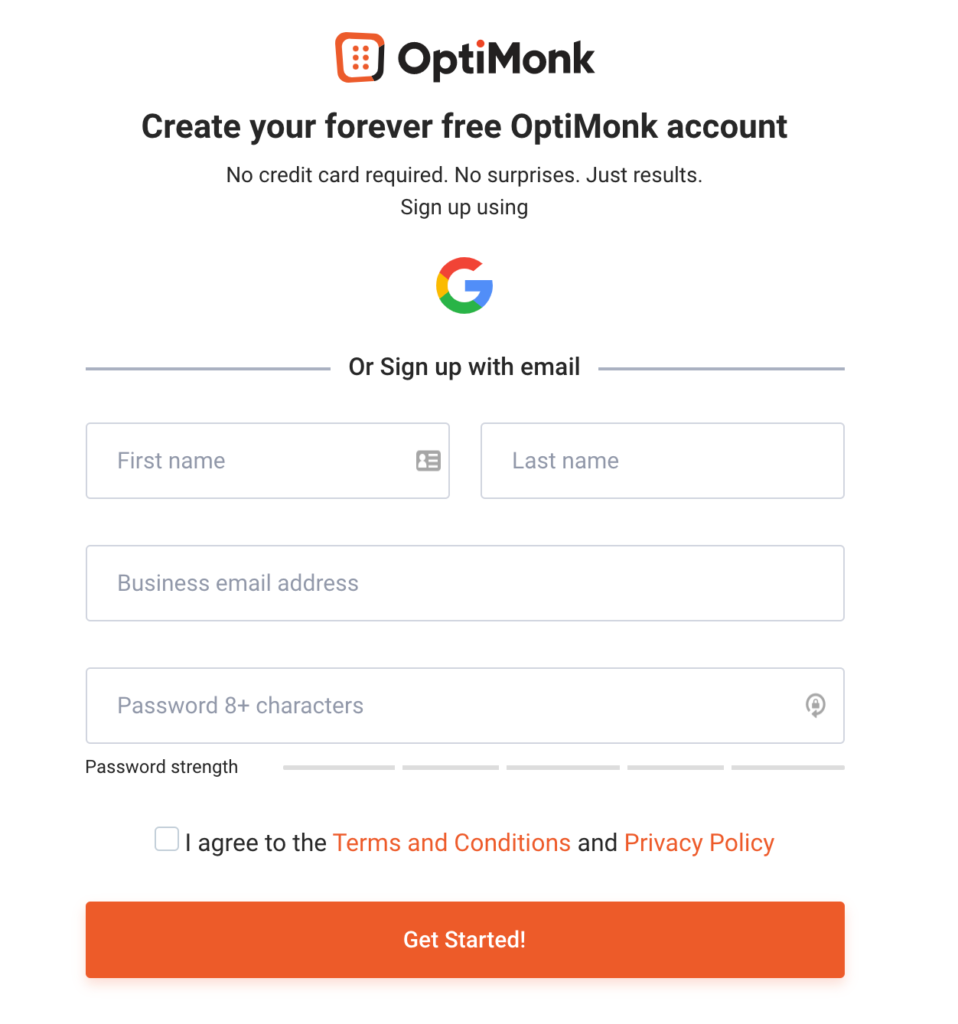
On the other hand, SalesForce uses a lengthy form. Generally, friction-based sign-up processes that involve many steps, fields are mostly for complex products with sales-led go-to-market strategies.
The value of the product needs to be high similarly to SalesForce so users are willing to complete this long sign-up process.
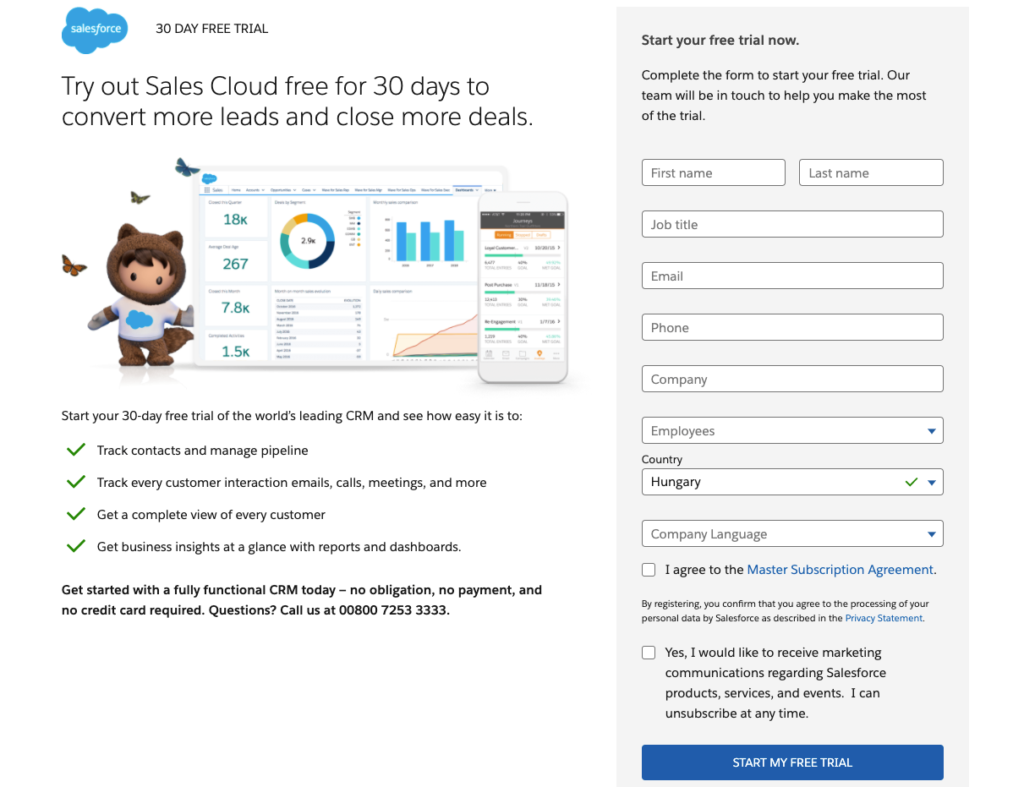
Removing unnecessary information from your registration page will help customers focus on what they need to do when submitting their details – filling out a simple form with only two or three input boxes.
This way you’d avoid people churning during the registration process because they feel like it’s taking too long.
2. Send emails to unfinished sign-ups
For those people who left your sign-up flow without completing it, you can follow up with them by sending an email.
You’ll want to include a link to the unfinished sign-up form and your offer or incentive for completing it.
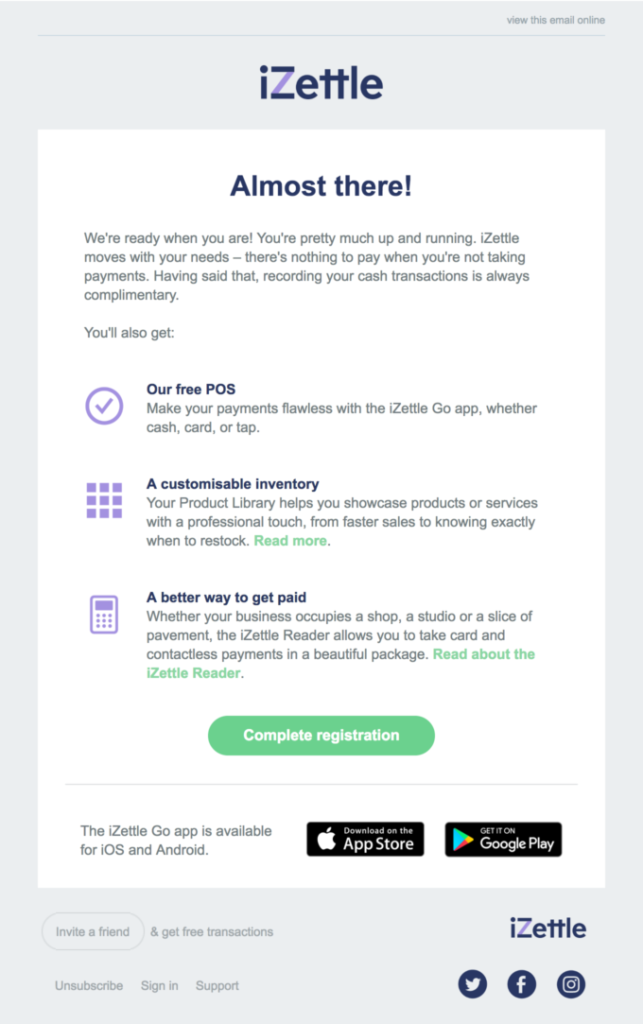
Including an incentive such as a free trial period of your service will help increase conversion rates on this type of campaign.
3. Add a chat bubble to your registration page
Including chat on the registration page comforts registrants as they can send a message to your support team, which in turn helps answer their questions.
If you’re using chat on your registration page, make sure that it’s not intrusive and easy for people to close if they don’t want to chat.
3 Techniques to Retain SaaS clients
1. Provide reliable customer service
Customer service is one of the most important aspects of any business, not just SaaS. This includes answering your phone or emails in a timely manner, and resolving issues quickly.
In order to retain clients, you must keep them happy while also addressing their concerns promptly so they don’t leave and go elsewhere for help.
To retain SaaS customers it pays off to have an amazing support team that can resolve any problems with little effort.
- Provide an easy way for customers to contact you at all times
- Make sure there are customer service representatives available most of the day for emergency situations
- Automated prompts offer great assistance when needed but are not enough if someone wants personalized attention from live agents
2. Have a plan in place to address potential problems before they happen
Your competitors are improving every day, how are you keeping up?
Predicting potential problems before they arise is an effective way of avoiding trouble if and when it becomes necessary.
If something goes wrong with your product or service you have to let your users know, preferably before it happens.
That can be even more problematic than customer support issues since those SaaS users will likely demand refunds and compensation which may not exist at this time due to cash flow constraints.
If you face a similar misfortune, don’t sleep on sending an apology email to your customers.
3. Don’t upsell too early
Upselling new customers too early can backfire and make them think they’re being hounded to buy more services.
By waiting until the time is right, you will have a better chance of having an interested customer who wants to learn about your offerings and considers making purchases in the future.
This also gives you enough time to understand your customers and what exactly they need and then tailor your offering to match their needs.
Invest in customer success to improve retention rate and relationships.
Customer success helps understand customers’ pain points and tailor special offers only to customers who are ready to upsell.
The result of a good customer success, a personalized experience and more satisfied customers.
Conclusion
The most important thing to remember is that you have to use a combination of these techniques. You cannot rely on one or the other and expect good results.
In reality, SaaS marketing consists of a lot of tweaking, optimizing, and understanding the data.
Acquiring new users and customers in one part, but the bigger one is how to retain them.

